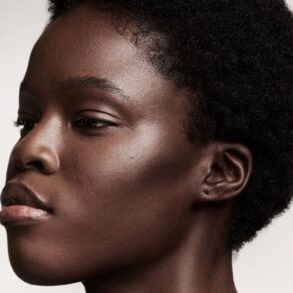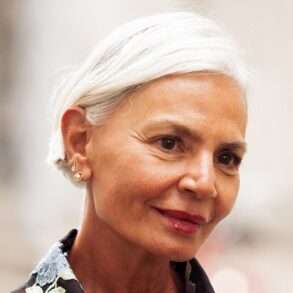Not everyone can carry off a white suit with matching mink trim – in May, at that. But Will Phelps, a party promoter from Detroit, was not about to be caught twinning with a guest wearing the same outfit at one of his legendary white parties, which he’s thrown since his 34th birthday in 1998.
He commissioned the custom ensemble for his 2010 fete, requesting snowy fur on the pockets, zipper and the knot of his wide tie. Because Phelps’s philosophy is go big or go home, he tried to one-up himself from each party to the next. One year, he ordered a pair of white alligator boots. Another time, he mandated that only white cars be admitted to the VIP parking lining the street outside the club where the party was held. In 2018, five couples got married at the white party. And there was the year he advertised the event using muscular men decked out in tiny white swim trunks. Their pecs and abs bore invitations to attend the soiree, written in white body paint.
Blending elegance and excess may be the hallmark of the white party itself. It’s become a fixture in Black communities in the US, an intergenerational “grown-and-sexy” gathering where everyone wears white and Black beauty, swagger and sartorial creativity intersect. This past Labor Day, partiers marked the imminent end of summer with an “Afrobeat Heavenly Bodies” version in Austin, Texas; a Baltimore party where the old-school R&B singer Keith Sweat headlined; a day party in little Louisburg, North Carolina; and dozens – if not, hundreds – of others across the nation. There is a malleable grammar to the white party: it has a uniform – flowing linen is the party’s textile of choice. And the party endures because it’s an ebullient celebration and communal spectacle wrapped in a culturally relevant package. The white party salutes the perpetual power of Black people and Black culture to transform.

A former hairdresser and nightclub owner, Phelps calls his annual soiree the “Original White Party”. So do plenty of other promoters, for whom bragging rights are paramount. Yet the white party, as we know it, has no single influence or root. Consider its history a tale of multiple genesis. The Miami advocates Frank Wager and Jorge Suarez created a white party benefit for an HIV/Aids prevention non-profit in 1985. And in the same decade, the Dîner en Blanc series invited white-clad diners to commune and cater meals in a posh Parisian location.
Phelps said he noticed color-themed parties among Black Detroiters in the late 1990s, and the cream editions captured his attention. But white parties got their most fabled come-up with the ones Diddy threw in St Tropez and later at his East Hampton estate (back when he was better known as Puffy). From the late 1990s to 2009, Diddy’s bashes brought together It Girls, hip-hop moguls and entertainment icons: Mariah Carey, Beyoncé, Lil’ Kim, Star Jones, Donna Karan, Leonardo DiCaprio, the Kardashians and Hiltons and LL Cool J all dropped in over the years. In August 2004, Aretha Franklin attended, adorned in a bedazzled duster and carrying a transparent tote. Jet magazine reported once on the flamethrowers and the luxurious surf-and-turf dinners washed down with Ciroc vodka. Another year, TMZ wrote: “Anyone not wearing all white was turned away.”




By Phelps’s second annual party in Detroit, he was also rejecting people for not wearing white. “The men had more trouble finding clothes,” he said. “But I had to not let them in just to make a point. Because if you let people not follow the thing, they’ll never follow the thing. Once they saw the girls in there, they found a way to get that white.” Phelps went to Detroit boutiques and department stores, requesting that they stock more white apparel. “Come March or April, their windows turned white. People used to say ‘It’s snowing’ when the white party came.”
The aesthetic pleasure of Black skin under white fabric seems a given – every person I interviewed for this story said some iteration of “it just looks good.” Tameka Foster Raymond, an Atlanta-based fashion designer and author, said robing one’s self in white boosts the mood. “When you’ve got on what we call your ‘crispy white’, you just feel good. You don’t want anybody to put their makeup on you. You don’t want to spill a colored drink on yourself. It makes you walk a little taller.” Foster Raymond has styled many musicians, including Lauryn Hill, Jay-Z and Foster Raymond’s ex-husband, Usher (she masterminded his white suit-fedora combo and news-making entrance via yacht at the 2004 Video Music Awards in Miami).
White parties bind Black people together in mutual glorification of Black beauty. And that’s no small thing, even when it seems the parties’ supreme goal is a good unthinking baccanal. Whiteness has long symbolized purity and cleanliness. The color black and Blackness as racial category have often been identified with filth, depravity and deprivation, even monstrosity. The concept of cleanliness – especially as it pertains to wearing white – can never be neutral for a people presumed prima facie to be dirty, whose ancestors include enslaved and free washerwomen who labored to ensure white people’s garments stayed white. Yet to be “clean” in Black vernacular also means to be dressed immaculately and utterly convinced of one’s flyness.
Part of the white party’s appeal is that it democratizes that flyness. Looking good in white is accessible to anyone across age and class. Foster Raymond plans to throw an all-white event for her son’s upcoming 16th birthday party and noted that the white party “is the easiest kind of party to dress for”, because a white T-shirt is always within reach.
The pageantry and the peacocking that takes place at white parties – whether you’re wearing a gown or a tank top – likely has roots in the past, according to Jonathan Michael Square, a historian at Parsons School of Design. Square noted the historical significance of African diasporic people’s knack for blending the sacred and the secular: “In a lot of Afro-diasporic religions, even African American Christianity, white textiles are really important. Think about baptisms,” he said. “A lot of Black people wear white to funerals, which is kind of counter to a Western tradition of wearing black to funerals. You tend to wear white at ceremonies or during a certain period of initiation into these religions. There’s a spiritual component, and even if people aren’t entirely aware of it, they’re still tapping into that history.”
That history is ubiquitous in cultural products and visual archives of Black life: Gordon Parks’s photographs of Nation of Islam women, a sea of white in their alabaster head coverings and dresses; new Divine Nine sorority sisters swathing themselves in “uninterrupted white” from head to toe; church ushers and acolytes in shimmering suits and frocks, the white-suited blaxploitation-esque models in Barkley Hendricks paintings. Wearing white sets a person apart, signaling individualistic sartorial flair or that you are part of some collective larger than yourself.




The cultural historian and curator Brittany Hutchinson attended her first white party when she was 25. She’d watched her mother, aunt and grandfather preparing for white parties as a child, and attending the event was a rite of passage for her, a sign that Hutchinson, now 38, was a sophisticated adult. In her native Chicago, there’s a special homegrown variant: an all-white cruise around Lake Michigan, complete with local steppers dazzling with their footwork. “Seeing my mom get ready for a white party was the introduction, but then my awareness grew through being around [older relatives],” Hutchinson said. “You just kinda absorb that information.”
She also practices a diasporic faith, Lucumi, sometimes known as Santería. Its followers frequently wear white after initiations or in chaotic times; Hutchinson might wrap her head in cloth to dispel confusion. White is associated with the orisha, or deity, Obatala, whom Hutchinson said “signifies wisdom, a coolness of temperament and a very measured, careful approach to decision making and mental clarity”. And while there may not be a traceable direct connection between the orisha and white parties, wearing white can mean you are protected or momentarily unsoiled by the grit of daily life.
That message is not at odds with a satisfying white party romp, Hutchinson said. “A white party’s meant to be lighthearted and purely enjoyable. It’s a moment where your issues, your troubles are supposed to not enter that space where the party’s happening” – if only for the one day when you’re wearing that pristine white bodycon dress or guayabera and imagining a carefree world.
This post was originally published on this site be sure to check out more of their content.








